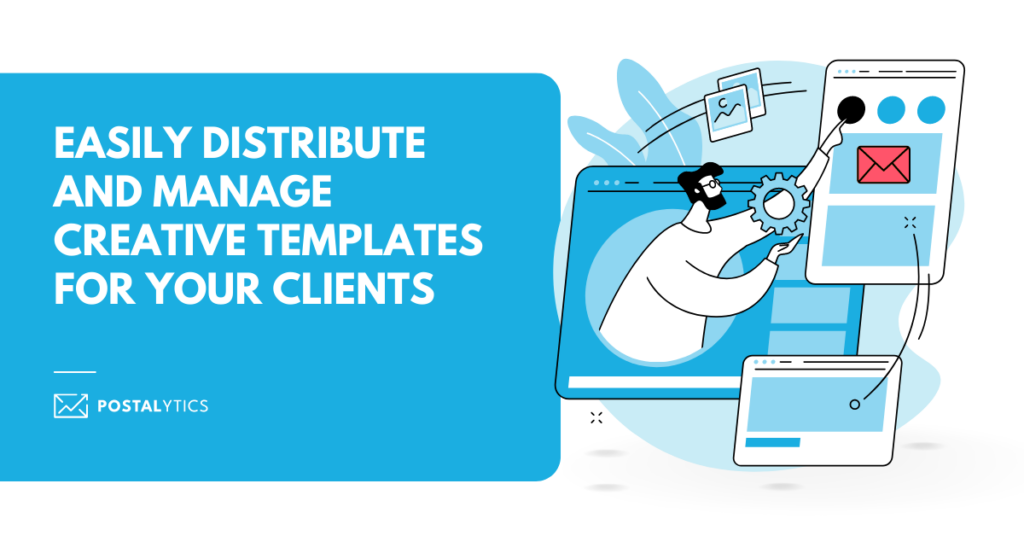
Managing multiple direct mail marketing campaigns isn’t as easy as it sounds. It is a time and resource heavy process that requires you to be constantly on your feet to create new designs that satisfy your various clients.
Instead of starting from scratch, you can use creative design templates for your clients where basic details remain the same. With these templates, you only need to make a few design changes each time.
At Postalytics, we’re a direct mail platform that provides an in-depth templating system. Here are some challenges of managing your direct mail templates and actionable tips and best practices to solve them.
What We’ll Cover:
The Challenges of Managing Creative Templates
The most common challenges faced by agencies and companies that manage a lot of direct mail creative templates are:
Difficulty organizing large numbers of templates
How do you store different direct mailer templates for all your clients? Do you store them where everyone on your team can access them? How do you segregate each template for your client based on formats like postcard templates or self-mailers? This can be very challenging if you do not have a dedicated platform to organize and manage all these templates.
Ensuring version control and consistency
Have you ever encountered a situation when someone on your team used an old version of a direct mail template and submitted it for printing? This could mess up your budget and timelines and leave a bad impression on your clients. Thus, you need a proper system for version control and consistency across clients and projects.
Time-consuming template customization
Even if you have a platform to store and manage your templates, having them is useless if you can’t customize them. For example, if you need to download your templates after every small customization or if you need to spend several hours learning how to customize templates, it will waste a lot of your team’s time instead of saving it.
Inefficient distribution and updating of templates
During the process, you must constantly share the templates with your team and clients for approval and further work. That’s one of the major challenges teams face, as they usually need to download every file after a minor update.
Limited visibility into how templates are used
If your storage platform provides access to everyone, anyone on the team might make changes to these templates. If you don’t get complete details of who changed what in the templates, this can lead to limited visibility into how your direct mail templates are being used and updated.
Security risks associated with template sharing
If you allow everyone to access your templates, they may be misused. In the worst case, there might be a breach of security which can lead to client mistrust.
Easy Template Distribution and Management
With Postalytics, you can easily manage and distribute your templates in four easy steps:
- Access the Custom Prebuilt Template Workflow from your agency account dropdown.

Create a new template by following the required steps.
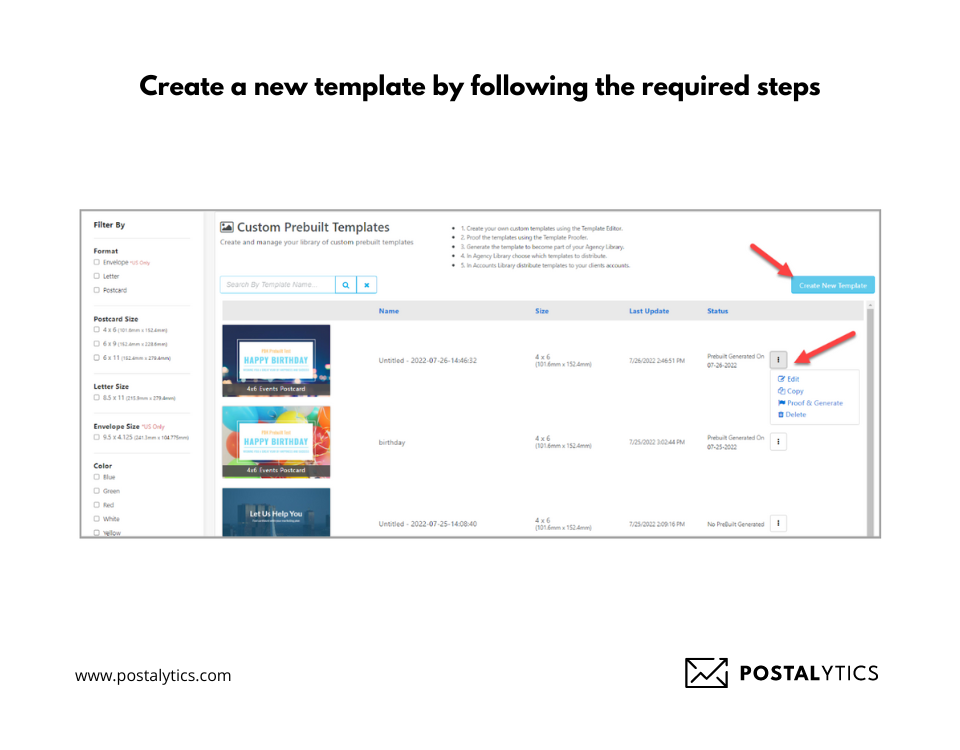
- Click on Generate to save the design template to the library after you’re done with creating and proofing.
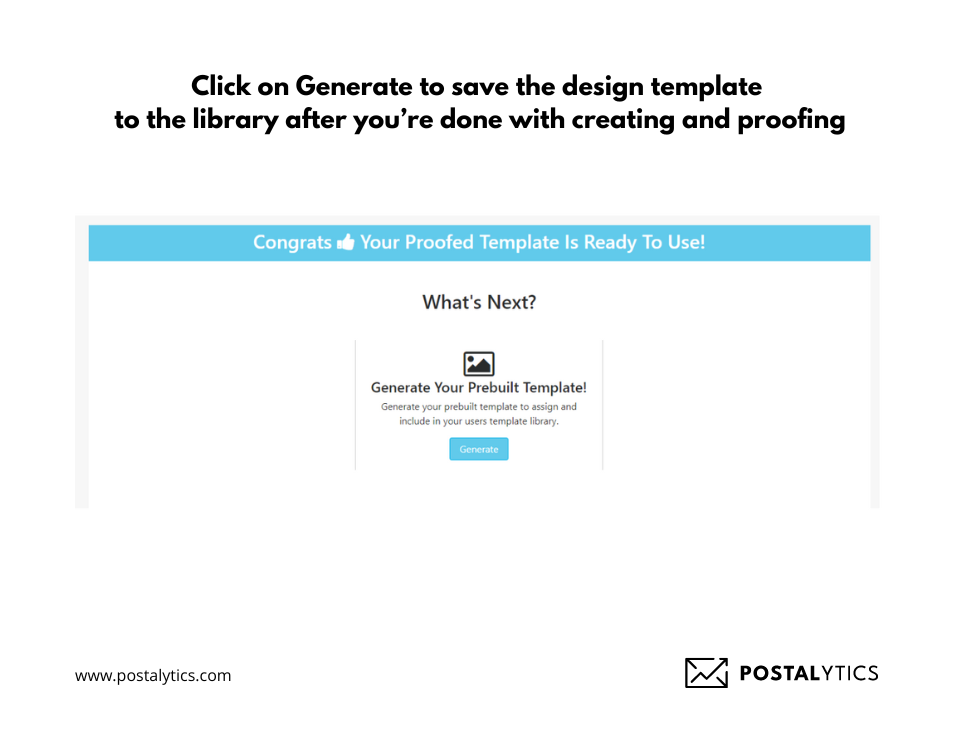
- Set a unique name and filtering tags (if any). Then generate the template and click ‘Add to Agency Library.’

- From the ‘Manage Your Agency Prebuilt Template Library’ screen, you can view individual templates, use filters to showcase the templates you need, and choose Insert or Remove to add or delete the chosen templates from your library.
After completing these steps, you can access the templates in your client account by selecting ‘New template’ from the creative dropdown tab and then selecting ‘Choose Prebuilt.’
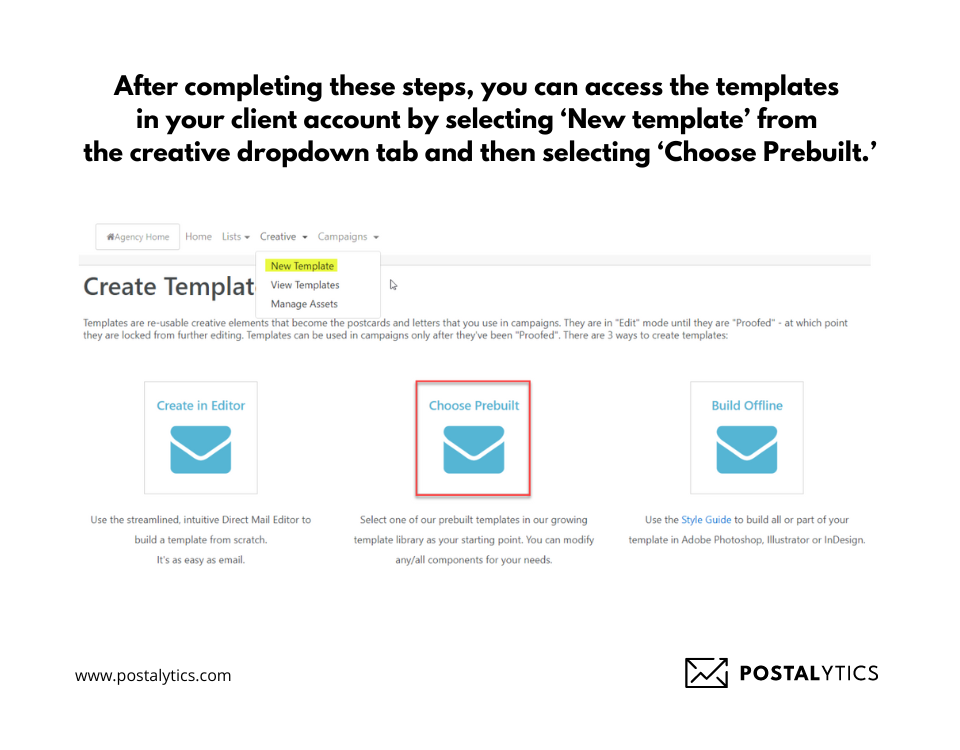
You can even edit these templates and add various personalization options on the platform itself.
Best Practices for Template Management
Here are five best practices you can follow for seamless template management:
Establish clear guidelines and processes
It can be tempting to create many templates, but this could make it difficult to find the ones you need. Instead, establish clear guidelines and processes for template creation. Consider how to make changes to the templates, how to establish version control, etc. Doing so helps everyone stay on the same page and reduces errors and misinterpretations.
Use a centralized storage and management system
Instead of having your templates in different locations, you can use a centralized storage and management system offered by platforms like Postalytics. You can store your templates in our library and reuse them for different audiences and campaigns. If you want to edit, copy, or proof your template, you can access Postalytics’ Template editor.
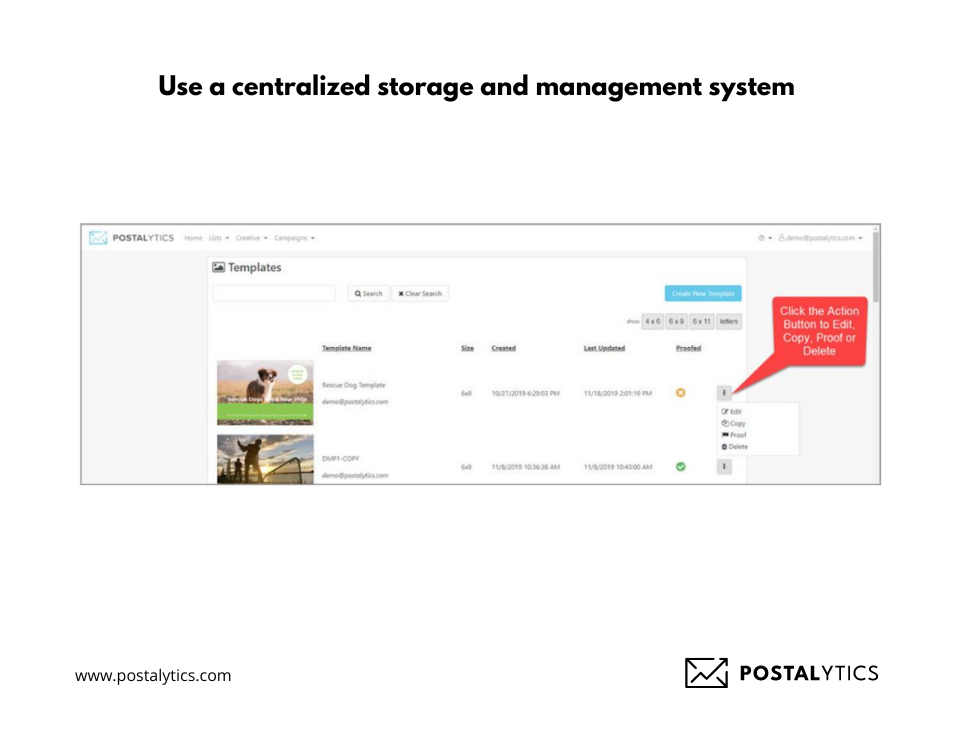
Provide training and support for users
To ensure that everyone is on the same page and there are fewer manual or print errors, you need to provide training and support for everyone involved with direct mail campaigns. This could mean providing training for understanding the different formats, how to approach design, the kind of campaigns that get more conversions, how to use a direct mail automation platform, etc.
Conduct regular audits and updates
To keep your professional designs fresh and updated, you must schedule regular audits and remove any unwanted templates you no longer use. These audits could be held once every quarter. If you take on a lot of temporary client projects, you need to conduct these audits more often.
Ensure security and access control
You don’t want everyone on the client side to be able to access your templates. At the same time, you must ensure security, as you wouldn’t want people to customize the templates haphazardly. To do so, have a strict check in place or use a platform that enables you to provide limited access to the templates.
Choosing The Right Creative Templates
There’s no use picking a template if it’s the wrong one for the job; this will only add to the workload and leave clients disappointed. Here are four tips to help you pick the right creative templates for your clients.
Understand your client’s needs
By understanding your client’s requirements, you can create templates having the right design elements, branding, imagery, and message. You can even ask them for their previous campaigns and take inspiration from them.
Consider usability and functionality
While trying to create aesthetically pleasing designs that attract attention, don’t forget to focus on factors like usability and functionality. For example, while using a dark-colored background, ensure your content gets written in contrasting/light colors.
Look for customization options
Create templates that you can easily customize for the different campaigns you run for your clients. With Postalytics’ template editor, you can easily edit and customize your campaigns to give them a more personal touch.
Consider the quality of the design
The design of your templates should be top-notch. This includes using the right colors, fonts, and imagery and creating a cohesive layout. You can even A/B test your designs to select the right one for your client.
Final Thoughts
Creative templates can save your team time and make working on client projects easy and seamless. In addition, by organizing and managing these templates, you can create a proper workflow within your team.
One way to ensure your templates are managed effectively is by using an automation platform like Postalytics. Our platform provides a customized template library and all the features you need to create and deploy your direct mail campaigns.
Start your free trial today!
About the Author

Dennis Kelly
Dennis Kelly is CEO and co-founder of Postalytics. Dennis joined Boingnet, the predecessor to Postalytics, in 2013. Boingnet was focused on providing print and direct mail marketing service providers the ability to add digital marketing channels to their direct mail campaigns. Postalytics is Dennis’ 6th startup. He has been involved in starting and growing early-stage technology ventures for over 30 years and has held senior management roles at a diverse set of large technology firms including Computer Associates, Palm Inc. and Achieve Healthcare Information Systems.
